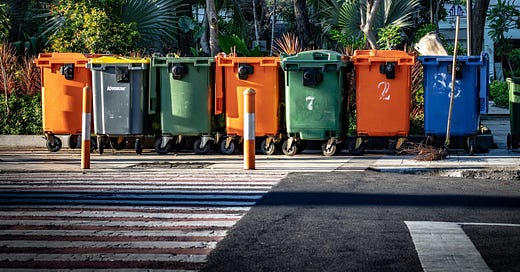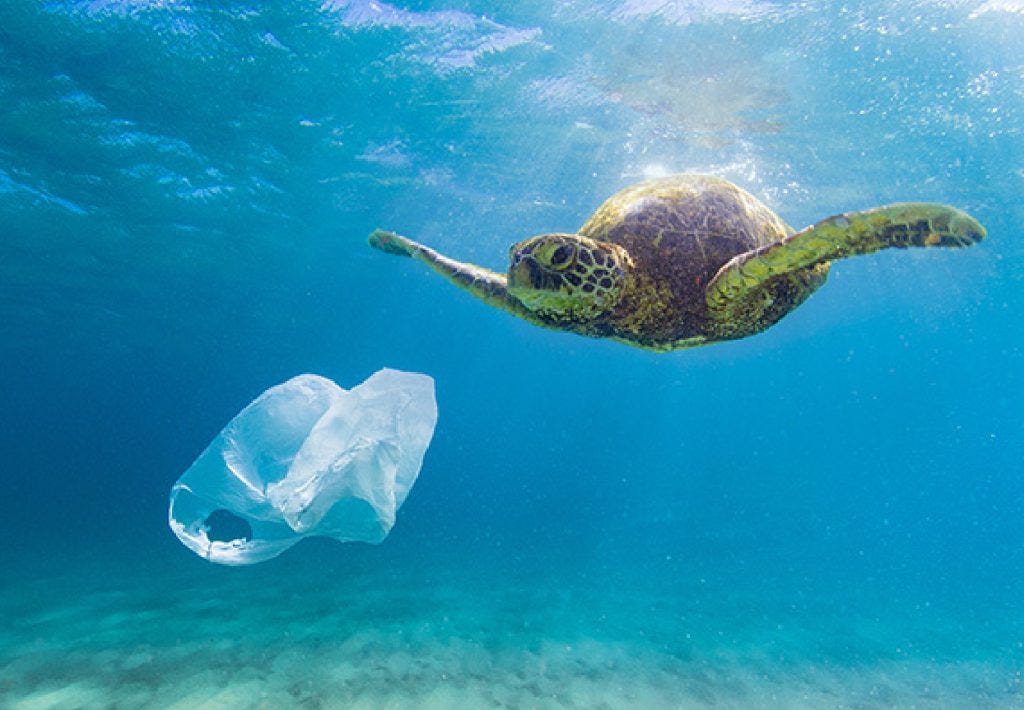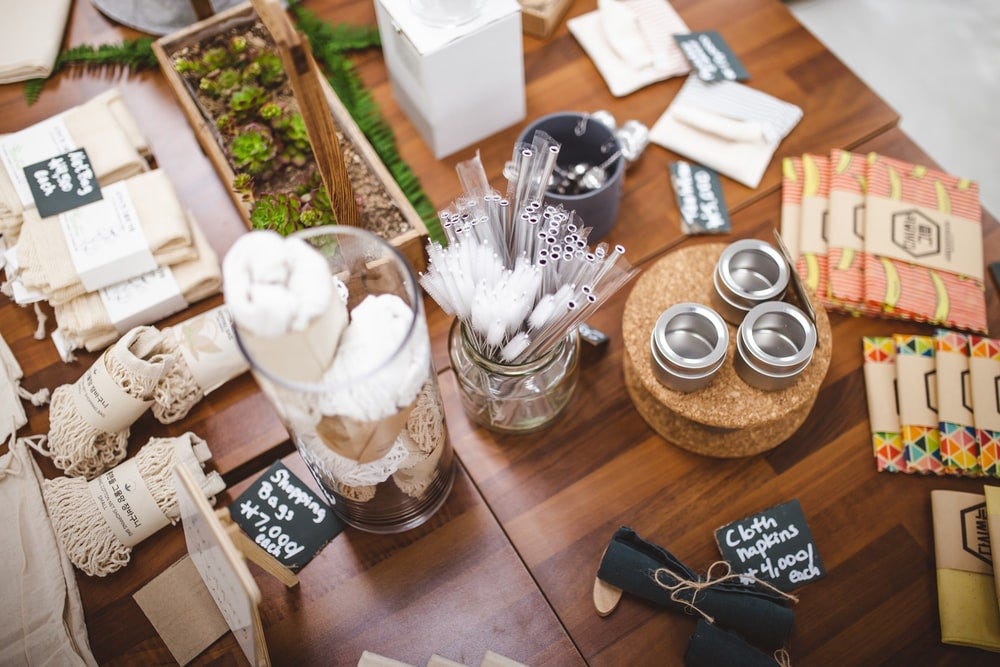One of the first things that we're taught in elementary school science class is the three R’s — reduce, reuse, recycle.
We’ve heard over and over again that “Recycling is good for the planet.” So we begin to internalize it. So when we do recycle, it makes us feel good. A task as easy as throwing something into a blue bin instead of black in exchange for some feel good emotions? Who wouldn't want that?
Recycling gives us power to control our own habits, to the point where we are comfortable calling people out when they don't recycle — it’s referenced through pop culture like TV shows and movies all the time. Speaking of which, happy belated Global Recycling Day.
Yet, there’s more to recycling than you might think. And it has less to do with people’s attitudes towards recycling and more about the lack of infrastructure and slow innovation within countries to handle the amount of waste generated by its people.
Let’s walk through what we know and hopefully it’s not soda pressing.
At a Glance
Recycling is often championed to be the core strategy by many businesses and government to be the best way to take on creating a clean and healthy world.
With waste forecasts made by the World Bank projected to grow trash by 70% in the next 30 years, and plastics production projected to grow exponentially (as mentioned in our shampoo edition), the total amount of garbage is going to get worse. As a $300 billion global industry, the waste management leaders tout that recycling efforts will disrupt and address this impact.
In reality, most of these recycling commitments are hollow, pushing most of the responsibility to other countries as someone else’s problem, and not actually solving the core issues:
A growing unsustainable consumer base demanding for more materials.
Continued use of non-recyclable items in everyday goods.
No real, standard infrastructure to recycle all types of materials at scale.
What “Recycling” Sounds Like
The recycling industry in the U.S. is pretty complicated. Every city and state has its own regulations and methods that govern what it recycles, so some places have better procedures than others.
The EPA estimates that around 75% of waste produced in the U.S. is capable of being recycled, but the recycling rate has plateaued to ~34%, and that hasn't changed since 2010. That's a huge gap, and it indicates that something's going wrong in the recycling process.
One thing to note is that even in the best recycling systems, the goods you send over to the recycler are only going to become new products if there's a market demand for them. And even if there is market demand, not all recycling plants are capable of processing all the materials.
Here's how goods get recycled:
Recycling trucks collect materials from curbside pickups, recycling bins, etc.
Materials are then brought to a center and sorted into recyclables by type and the non-recyclable items are separated out.
Manufacturers purchase the recyclable items.
We’ll also highlight the most common “recyclable” materials:
Metal: 100% recyclable by melting to be used for new goods. This is the most recycled material in America, but there are different intake processes for scrap metal vs. cans. Fun fact: Turning an aluminum can into a new one takes 95% less energy.
Glass: 100% recyclable by melting to be used for new goods.
Paper: Most paper, newspapers, and cardboard can be recycled. A general rule of thumb is anything smaller than a post it note should not be recycled. Be sure to break down those cardboard boxes before you put them in the recycling bin! Fun fact: Newspapers account for 1/3 of the U.S.’s recyclables.
Plastics: Some are easy. Some are hard. We’ll share more in a bit.
What “Recycling” Actually Looks Like
Now you might think with these recycling systems, cities and businesses are able to commit to recycling. For the longest time, however, most materials end up in landfills because the way we use plastic, metal, and paper are not that easy to recycle. Here are a few of the insane number of reasons:
The item has an odd color, shape, size, weight, resin composition, etc. to recycle and is a “mixed” item. Inconsistencies in materials make it difficult for recycling centers to recycle many items.
The material is “contaminated” with food waste. It takes too much effort and money to clean, while also being difficult to sell “unclean” material.
The kind of plastic isn’t actually recyclable. We’ll share more below that while the symbols may indicate it can be recycled, there is a small chance your local area would be able to recycle it.
Instead of handling these nuances, materials thought to be readily recyclable — plastics, glass, paper, aluminum — are typically sent from wealthy nations to other countries to handle, with 70% of the world’s plastic waste originally sent to China for the past 50 years. This is about 7 million tons a year.
And this worked for a long time, with numerous Chinese businesses paying for the world’s trash, making more money from processing and selling the recycled raw materials. Because China was a huge exporter to America, many of the same shipment boxes used to deliver goods were used to ship plastic and trash out of the city, and it was also generally cheaper to send it across the Pacific than it was across the country.
Recology pays $300-$500 to ship a container of recycled plastic to China. It would cost $3500 - $4000 to ship that same container to the plastic process plants in the South).
This was a great deal, until in 2018, when China announced that it no longer wanted to be everyone’s “garbage dump.” The problems countries already knew about these materials became China’s problem, making it not profitable to import. Lots of pollution also started to pile up, as more plastic trash shipments snuck in illegally and permit-less shipments made its way into China’s land and waterways.
China now bans almost all trash imports, taking in less than 1% of its 2016 total, with other countries like Malaysia, Vietnam, and the Philippines shipping thousands of tons of waste back to the U.S., U.K. and Canada. This is being stockpiled in the same warehouse spaces used to ship trash.
Essentially, this re-cycles back to the same problem we originally had, with the U.S. continuing to throw away this same material into landfills or through incineration, which creates even more pollution.
Environmental Cost
These materials continue to have a drastic effect on the environment, especially due to our inability to recycle items. According to Science Magazine, 8,300 million metric tons of plastic have been produced to date (half of which have been manufactured in the past 15 years): 9% of which gets recycled, 12% is incinerated, and 79% accumulated in landfills or the natural environment.
Given that plastic still takes more than 400 years to degrade, most of the plastic that we've made is still around. If the plastic production rate continues, the ocean will have more plastic than fish by 2050 and there will be 12 billion metric tons of plastic in landfills.
How does plastic end up in the ocean? About 90 percent of all the plastic waste that reaches the world's oceans gets flushed through the rivers, littering, windblown waste, industrial waste, municipal waste, and illegal dumping of trash.
Once at sea, sunlight, wind, and waves break down the plastics into small particles, microplastics, which have been found in every corner of the globe, from the Mariana Trench to Mount Everest. Microplastics have been found in hundreds of aquatic species (fish, shrimp, mussels) which end up on our dinner plates, and in our bodies. As a result of plastic in the ocean, the livelihoods of marine life are threatened and disrupt the ecosystem.
Pollution is the largest environmental cause of death and disease, responsible for over 9 million deaths in 2015 (⅔ of which were directly linked to air pollution). Plastic contributes to air pollution in the following ways:
Oil extracted for plastic releases toxic emissions.
Half of our plastics deemed to be "recyclable" are shipped overseas. Recycling facilities in Asia fail to have pollution measures, and they melt down plastics to dispose of them. In 2017, China announced it didn't want to pick up the first world country's trash which left countries like the U.S. puzzled on how to dispose.
Landfills fill up way faster than plastics can decompose. So, 40% of the world's garbage is burned.
When organic waste such as food starts breaking down, it releases methane, a gas that is 23x more effective at trapping heat.
Human Cost
By shipping a lot of the recycling to China and other Southeast Asian countries, most of the workers are low-paid, exploited workers, who are constantly exposed to toxic chemicals. The working conditions are reminiscent of poor factory workers.
Similarly, countries that previously shipped their recycling, have tearable living environments in the surrounding areas around landfills as more and more material is dumped and incinerated. This is happening across the country, where cities have stopped collecting recycling. Now that other countries aren't picking up after the U.S., states are sending waste to other states.
Research has also shown that hazardous waste sites, polluting industrial facilities, and other locally unwanted land uses are disproportionately located in nonwhite and poor communities. Hazardous waste sites are often built in neighborhoods where whites have already been moving out and poor minority residents have been moving in for a decade or two before the project arrived.
What the Symbols Really Mean
With all the different symbols on plastic packaging, it can be confusing for consumers to know what each symbol means and how to recycle it. The universal recycling symbol is the same, but the numbers inside make a big difference. Oh, and just because a product has the chasing arrows symbol, doesn't mean it's recyclable. ✅means plastics with this symbol are recyclable, and ⛔️ means it is probably not but check out your local waste management if there’s an exception
Knowing how to recycle properly will ensure that your good intentions will not go to waste.
Symbol #1: PET or PETE (polyethylene terephthalate) ✅
Most common plastic for single use bottles (soft drinks, water, ketchup, beer, peanut butter, salad dressing, vegetable oil, mouthwash)
Can be picked up through most curbside recycling programs as long as it's been rinsed and emptied out of food
The caps are probably made of separate plastic, it's best to trash them unless your town says you can throw them in the recycle bin
Symbol #2: HDPE (high density polyethylene) ✅
Found in milk jugs, juice bottles, bleach, cleaners, shampoo, butter and yogurt tubs
Can be picked up through most curbside recycling programs as long as it's been rinsed and emptied out of food
Symbol #3: PCV or V (polyvinyl chloride) ⛔️
Found in shampoo and cooking oil bottles, piping, windows, wire jacketing
Symbol #4: LDPE (low density polyethylene) ⛔️
Found in squeezable bottles, shopping bags, furniture, tote bags, dry cleaning, frozen food, toothpaste tubes
Symbol #5: PP (polypropylene) ✅
Some yogurt containers, syrup and medicine bottles, caps, straws
Can be recycled through some curbside programs, just make sure to remove food from the bottles
Symbol #6: PS (polystyrene) ⛔️
Disposable plates and cups, meat trays, egg cartons, carry out containers, aspirin bottles, compact disc cases
Symbol #7: Miscellaneous ⛔️
Found in three and five gallon water bottles, bullet proof materials, sunglasses, signs and displays, DVDs, iPod and computer cases
Innovations and The Future of Recycling
We know that it can feel discouraging to read the harsh realities of recycling and waste management, but there is hope, and a lot of companies and organizations are dedicated to improving the waste management process.
Terracycle is a company that collects non recyclable pre and post consumer waste, and then partners with corporate donors to turn your items into raw materials. They have a ton of collection programs where you can send in your recyclables for free.
John Layman, head of material science at Procter & Gamble and chief technologist and founding inventor of PureCycle Technologies, developed a revolutionary process to remove color, odor, and contaminants from polypropylene plastic waste (second most popular plastic, yet only 1% is recycled) and transform it into a “virgin-like” resin, which is the basis for plastic products.
Ridwell is a service that makes it easy to recycle your things. They send you a bag that you can fill up with batteries, light bulbs, film, clothes, etc, and will come to your door to pick them up, and responsibly manage your waste for you.
A lot of brands have also been popularizing upcycling plastics into their products. Here are some:
Adidas x Parley collab on a pair of shoes that repurpose 22 plastic bottles.
Girlfriend Collective's original athleisure wear repurposes 25 plastic bottles.
Buffy comforters repurpose over 50 plastic bottles.
Aday's Waste Nothing Jacket repurposes 41 plastic bottles.
Blue Planet Eyewear makes frames from recycled plastic.
But as we dug into some research, we found that there isn't enough recycled plastic to go around, and it is cheaper to buy recycled plastic than virgin plastic. Maxine Bedat, founder of New Standard Institute, doesn’t think that it is fair for fashion brands to point to their use of recycled plastic as a sign of their eco-friendly practices. “It’s actually better for their bottom line to use recycled plastic,” says Bedat. “And by saying their products are sustainable, they might actually be driving up demand for recycled plastic, which makes it more expensive for other industries that also want to use the material.”
Some effort is better than no effort. All in all, sustainable businesses should be in the business of selling less. And it's on us, the consumers to make the decision to consume less, reduce, and reuse.
Reusable Goods
Recycling is less important than reducing and reusing. Rather than wishcycling, and hoping that the things we toss in the blue bin will magically turn into something else, let's prevent us from having to throw things in the blue bins in the first place!
Some added benefits to buying reusable items is that you save money and it's better for your health. When exposed to heat, plastic melts, and the melt can seep into your food and body.
Here's a long list of reusable items you can purchase that will save money in the long term:
Reusable water bottle [Savings: ~$260/year]
Shop as low as $5 (Gatorade squeeze bottle) to as high as $95 (LARQ)
A laundry list of brands: Nalgene, Gatorade squeeze bottle, S'well, Contigo, Takeya, Corkcicle, Simple Modern, Thermoflask, CamelBak, Brita, Ello
Reusable Ziploc Bags [Savings: ~32/year]
Shop for sets as low as $10 (Amazon) to as high as $40-80 (Stasher)
A laundry list of brands: REZIP, Stasher, Nordic by Nature, LUNCHSKINS, Jagrom, Qinline, Gridlabs, Freshmage, Bumkins
Reusable Beeswax Food Wraps [Savings: ~90/year]
Shop for sets as low as $14 (ENEY) to as high as Abeego ($25)
A laundry list of brands: Bee's Wrap, Navega, Lilybee, Abeego, ENEY,
Many single use household items have a reusable, edible (?!), or plastic free version, it just takes some Googling:
Straws, baking cups, makeup remover wipes, paper towels, dryer sheets, diapers, menstrual products, grocery bags, and more.
What You Can Do
Reduce and reuse!! Try to limit how much you consume goes to waste.
Recycle all empty bottles, cans, paper and cardboard.
Keep plastic bags, food, and liquids out of your recycling.
Read more about what you can do about recycling by reading the links littered throughout this article.
Questions or comments on this piece? Suggestions on what we should cover next? Send us a note.










